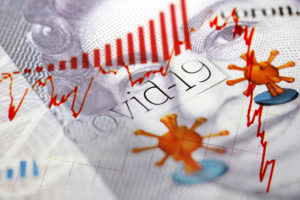Digital art represented by NFTs (non-fungible tokens) made a spectacular arrival in March with the $69.3 million (in Ether) auction sale by Christie’s of a collage by digital artist Beeple.[1] The buyer is founder of an NFT fund in Singapore. In the scramble to get up to speed on the phenomenon, NFTs have been denounced as a scam based on blockchain hype, advocated as a way to improve the economic standing of struggling non-celebrity artists[2], or heralded as a sign that the ‘Metaverse’ depicted in Neal Stephenson’s 1992 novel Snow Crash is fast becoming a reality. Regardless of the varied reactions to NFTs, it seems inevitable that financial institution lenders will be approached by customers seeking to put up newly minted NFT-linked art collections as collateral.
Real-world art loans most often take the form of revolving lines of credit using works of creative visual art as collateral. These loans use a number of techniques to mitigate the art world’s perennial issues with authentication, changes in market value, the need to obtain a first-priority security interest in the artwork, and the risk of theft or casualty loss. Historically, the default risks on these loans have been generally perceived to be relatively low in view of the affluent nature and often prominent identity of the borrowers under these credit facilities.
For institutional lenders to achieve a sufficient comfort level to consider making NFT-secured loans, a number of real-world techniques for evaluating requests for an extension of credit will need to be rethought and somehow accommodated. These considerations include ways to address risks related to provenance and authenticity, periodic appraisals to monitor changes in value, perfection of security interests, and insurance for theft or loss.
First, as to authentication, real-world certifications will be of little use. An NFT is by definition a unique “crypto asset,” but this does not mean that each NFT represents a unique work of art – indeed, multiple NFTs may be sold based on a single work, just as a real-world artist may authorize and sign a limited number or prints of an original work.[3] To authenticate an NFT, the artist may include an e-signature in the software code that is the basis of the NFT.[4] It is also important to keep in mind that an NFT is not itself the digital artwork, but it is instead a crypto asset consisting of a “smart contract” based on a specified blockchain which “points to” the asset, which may be a JPEG or other image file or a video recording. Many NFTs do not include any ownership interest in the underlying work, and do not transfer copyright, although they may include rights to non-commercial display on the web. In the case of Cristie’s Beeple sale, the artwork itself, in the form of a JPEG of the collage artwork, was transferred to the purchaser.[5] Tokens generally provide a kind of verifiable provenance only of the NFT itself, but not of the underlying artwork. An NFT may also impose licensing conditions on the NFT purchaser, such as a 10% royalty payable to the artist on any future resales of the NFT at a profit. The specific “bundle of rights” and obligations transferred by an NFT will have to be parsed by a lender with specificity.
Second, appraisals of NFT assets will likely be a challenge, in view of the volatility of prices in the crypto environment. Offsetting this is the possibility that rapidly expanding secondary markets for trading NFTs may be useful in establishing a “market” price.
Third, as to perfection of a security interest in NFT collateral, a lender may choose to perfect by treating an NFT as a “general intangible” under a local enactment of the Uniform Commercial Code (UCC) and filing a UCC-1 Financing Statement. Where a proposed borrower reaches out to a lender on the web or a blockchain, it may be challenging to identify a debtor’s precise location for purposes of a UCC filing. In addition, enforcement of a security interest perfected only by filing is less certain: Because an NFT lives only on a blockchain where the guiding principle is that “code is law,” an irreversible on-chain transfer by the borrower, even if done in violation of the terms of a security agreement, may put a crypto asset effectively beyond the reach of a conventional UCC foreclosure action on general intangibles. (Terms used here have their common meaning under most local enactments of UCC Articles 2, 8 and 9.) In addition, a security interest perfected only by filing will be inferior in priority to a security interest perfected by “control,” as discussed below.
Lenders do have other options under Articles 8 and 9 of the UCC for perfecting and enforcing a security interest in an NFT, drawing on techniques originally devised for investment securities and more recently applied to cryptocurrency and other digital assets. The lender could for instance have the crypto asset registered in the lender’s name under the terms of a security agreement, but this is often not acceptable to borrowers.
A lender may wish to consider an approach currently in use for loans secured by cryptocurrency collateral. Looking to procedures originally devised for equity securities in the indirect holding system, a lender may require a proposed borrower to transfer the NFT or other digital asset to a “securities account” with a “securities intermediary,” generally a bank or trust company. Under a three-way account control agreement (ACA) between the lender, securities intermediary, and borrower, the securities intermediary agrees to treat the NFT as a “financial asset” under Article 8 (usefully, any property, including a real-world asset, may be a “financial asset” under Article 8 if the securities intermediary expressly so agrees). With an ACA in place, a security interest in the account and/or the financial assets held in it can be perfected in favor of the lender where the securities intermediary agrees that it will comply with orders (“entitlement orders”) from the lender “without further consent,” thus giving the lender “control” within the meaning of Articles 8 and 9. Perfection by “control” will generally provide a secured lender with priority over any other security interest perfected by filing. In addition, the risk of an irreversible transfer of the asset on-chain may be mitigated by undertakings from the securities intermediary in the tripartite agreement that it will not transfer the asset (in our example an NFT) except in strict accordance with the terms of the ACA.[6]
As for casualty loss, theft, and the other vicissitudes that may befall works of art, it may be noted that in the case of the $69.3 million Christies/Beeple sale, instead of being locked up in a museum vault, the “original” JPEG was stored on the blockchain-based Interplanetary File System (IPFS). The NFT itself resides on an Ethereum blockchain maintained by the platform that generated it for the creator of the work, and there are already reports that some other platforms have disappeared from the Web inexplicably.[7] There are also reports of NFT art heists on a popular platform[8], and a new industry of fraudsters has sprung up to form and sell NFTs based on works of art in which the NFT minters themselves have no ownership interest.[9] There will likely be a need for new and expanded types of cyber insurance to insure against such contingencies. The Metaverse may indeed be closer, but the hazards that attend the glamor and brilliance of the existing art world will find undoubtedly find new expression in the new one.
[1] An NFT is a digital asset existing on a blockchain. A blockchain is a digital ledger verified by the consent of its users without the need for a trusted authority. Most digital assets, including cryptocurrencies like Bitcoin, are fungible in the sense that units representing equivalent value are widely accepted in exchange, just as five pennies may be exchanged for a nickel. By contrast, each NFT has unique characteristics and is marked by a specific digital signature from the originator which is embedded in its underlying code. Please see, e.g., “Explainer: NFTs are hot. So what are they?” and The Atlantic, “What Critics Don’t Understand About NFTs” (comparing valuations of NFT and traditional artwork).
[2] CNN, “NFTs have completely transformed these digital artists’ lives”
[3] “Digital asset,” “smart contract” (as defined on page 23), and other terms relating to blockchain-based assets are used as defined in the ABA Derivatives and Futures Law Committee Innovative Digital Products and Processes Subcommittee (IDDPS) Jurisdiction Working Group’s White Paper, as updated December 2020.
[4] The Christie’s Beeple NFT was “encrypted with the artist’s unforgeable signature and uniquely identified on the blockchain.” See Beeple: A Visionary Digital Artist at the Forefront of NFTs | Christie’s.
[5] Id.
[6] This article does not address a range of other issues that should be considered in connection with digital asset collateral. There are reports that tokens representing fractional interests in some art-linked NFTs are in some instances held by other persons. Such transactions raise, inter alia, a number of legal and compliance concerns relating to offers and sales of securities under US or foreign law, regulation of exchanges if traded assets are deemed be “securities,” investment company regulation, broker-dealer and investment adviser regulation, tax, and BSA/KYC/AML compliance.
[7] The Atlantic, “What Critics Don’t Understand About NFTs”
[8] The Verge, “Hackers stole NFTs from Nifty Gateway users”
[9] ArtNet, “A Collective Made NFTs of Masterpieces Without Telling the Museums That Owned the Originals. Was It a Digital Art Heist or Fair Game?”










